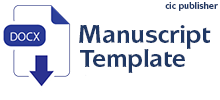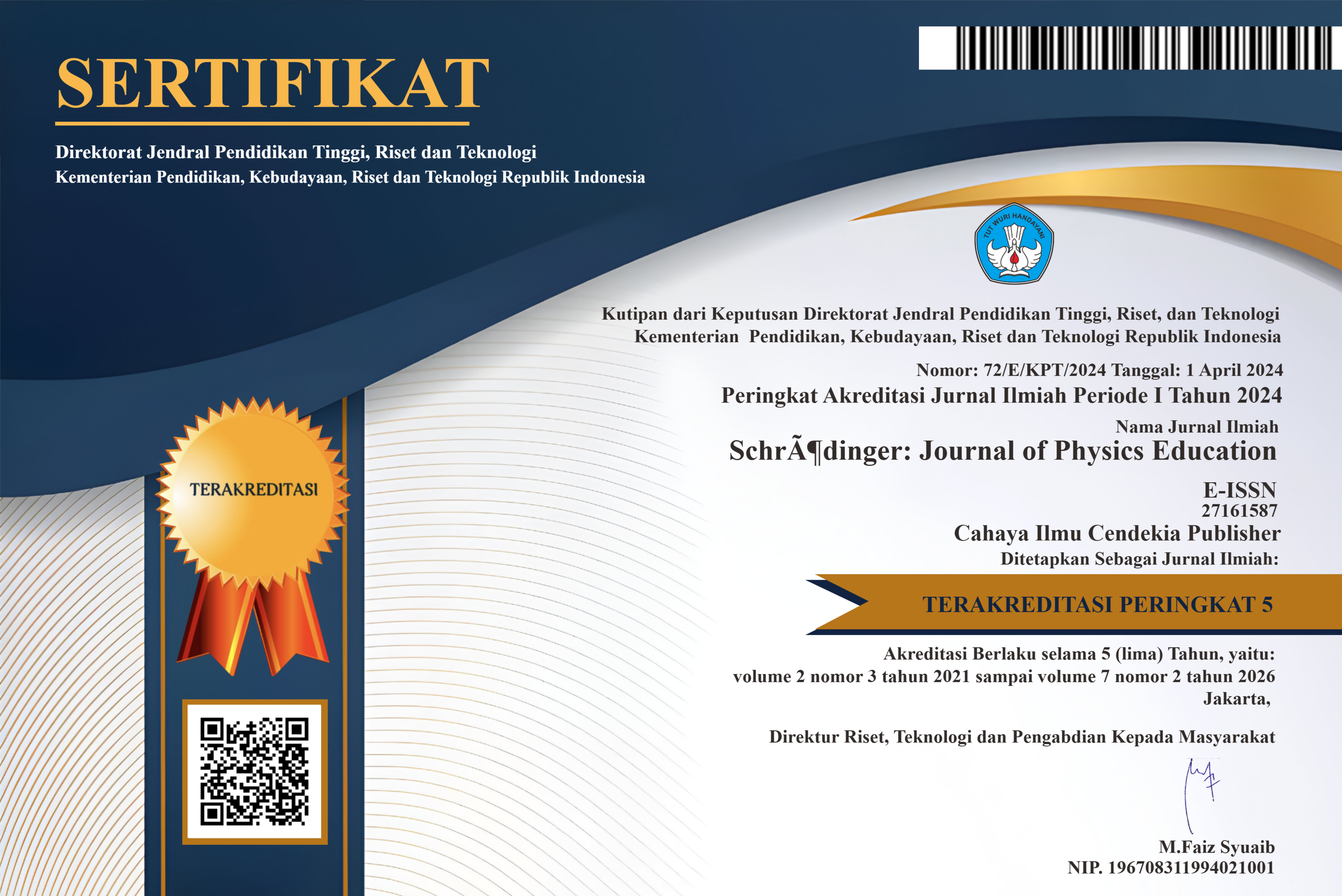Efficacy of ADDIE Instructional Design in Promoting Conceptual Change in Electronic Concepts at Tano-North Municipality, Ghana
Abstract
Purpose of the study: This study sought to determine the efficacy of the ADDIE instructional design in facilitating the conceptual change of senior high school physics students in Tano-North Municipality in Electronics.
Methodology: A design-based research (DBR) methodology was adopted using a sample of 101 participants. Data were collected using a 10-item Electronic Concepts Test (ECT). Data were analyzed quantitatively (frequencies, percentages, and Wilcoxon Signed Rank Test) and qualitatively (content analysis).
Main Findings: The results revealed that significantly high percentages of students (71.29% to 94.06%) demonstrated misconceptions about electronics concepts. The content analysis of the students' responses revealed various misconceptions, including 'temperature increases conductivity of the conductors' and 'heat increases conductor temperature,' among others. However, there was a significant increase in the percentage of students exhibiting scientific understanding after the intervention (Z = -2.83, p = 0.002, with a large effect size of r = 0.89).
Novelty/Originality of this study: While much attention has not been turned to the use of ADDIE instructional design as an instructional approach in physics teaching or, for that matter, the study of electronics, this study has revealed the efficacy of the ADDIE instructional design in promoting students' conceptual change in electronics concepts in the Tano-North Municipality. Based on the results, the researchers recommended the ADDIE instructional design to high school physics teachers in the Tano-North Municipality for teaching and learning electronics concepts.
References
C. Han, “Application analysis of embedded system in vehicle electronics,” J. Phys. Conf. Ser., vol. 1550, no. 3, pp. 1–4, 2020, doi: 10.1088/1742-6596/1550/3/032102.
Q. Counseller and Y. Aboelkassem, “Recent technologies in cardiac imaging,” Front. Med. Technol., vol. 4, no. 1, pp. 1–17, 2022, doi: 10.3389/fmedt.2022.984492.
J. Hinojosa, F. L. Martínez-viviente, V. Garcerán-hernández, and R. Ruiz-Merino, “Teaching-learning model for the science of electronics,” J. Technol. Sci. Educ., vol. 10, no. 1, pp. 87–100, 2020, doi: 10.3926/jotse.604.
D. R. Retnani, R. Royani, C. Beccles, and A. Afras, “Improving science learning outcomes on light and optical instruments through visual methods in junior high schools,” Schrödinger J. Phys. Educ., vol. 5, no. 1, pp. 32–38, 2024, doi: 10.37251/sjpe.v5i1.883.
N. Erceg, L. Jelovica, Z. Hrepić, V. Mešić, M. Karuza, and I. Aviani, “University students’ conceptual understanding of microscopic models of electrical and thermal conduction in solids,” Eur. J. Phys., vol. 42, no. 4, pp. 1–29, 2021, doi: 10.1088/1361-6404/abf5eb.
K. G. Nelson, A. F. McKenna, S. K. Brem, J. Hilpert, J. Husman, and E. Pettinato, “Students’ misconceptions about semiconductors and use of knowledge in simulations,” J. Eng. Educ., vol. 106, no. 2, pp. 218–244, 2017, doi: 10.1002/jee.20163.
Y.-L. Chen, P.-R. Pan, Y.-T. Sung, and K.-E. Chang, “Correcting misconceptions on electronics: Effects of a simulation-based learning environment backed by a conceptual change model,” Educ. Technol. Soc., vol. 16, no. 2, pp. 212–227, 2013.
H. D. Assem, L. Nartey, E. Appiah, and J. K. Aidoo, “A review of students ’ academic performance in physics : attitude , instructional methods , misconceptions and teachers qualification,” Eur. J. Educ. Pedagog., vol. 4, no. 1, pp. 84–92, 2023, doi: 10.24018/ejedu.2023.4.1.551.
G. Resbiantoro, R. Setiani, and Dwikoranto, “A review of misconception in physics: The diagnosis, causes, and remediation,” J. Turkish Sci. Educ., vol. 19, no. 2, pp. 403–427, 2022, doi: 10.36681/tused.2022.128.
E. Purwanti and H. Heldalia, “Critical thinking ability: Analysis of flat mirror reflection material,” Schrödinger J. Phys. Educ., vol. 4, no. 1, pp. 12–17, 2023, doi: 10.37251/sjpe.v4i1.493.
W. T. Wulandari, “Contextual Learning Approach : Development of worksheet in physics subjects,” Schrödinger J. Phys. Educ., vol. 4, no. 2, 2023, doi: 10.37251/sjpe.v4i2.506.
WAEC, “Chief examiners’ Reports: Science Subjects,” 2017.
WAEC, “Chief examiners’ Reports: Science Subjects,” 2018.
WAEC, “Chief examiners’ Reports: Science Subjects,” 2020.
WAEC, “Chief Examiners’ Report,” Accra, 2021.
S. M. Alnajdi, “The effectiveness of designing and using a practical interactive lesson based on addie model to enhance students’ learning performances in University of Tabuk,” J. Educ. Learn., vol. 7, no. 6, p. 212, 2018, doi: 10.5539/jel.v7n6p212.
R. V. Moral, A. K. T. Insong, and J. V. Santos, “Effects of ADDIE model as an instructional system design for senior high school students in natural science through alternative delivery learning,” J. Eff. Teach. Methods, vol. 1, no. 4, pp. 42–48, 2023, doi: 10.59652/jetm.v1i4.63.
C. L. Li and M. J. B. Z. Abidin, “Instructional design of classroom instructional skills based on the ADDIE model,” Tech. Soc. Sci. J., vol. 55, no. 1, pp. 167–178, 2024.
K. Khadidja, “Constructivist theories of Piaget and Vygotsky : Implications for pedagogical practices,” Psychol. Educ. Stud., vol. 13, no. 3, pp. 359–372, 2020.
K. Umida, A. Dilora, and E. Umar, “Constructivism in teaching and learning process,” Eur. J. Res. Reflect. Educ. Sci., vol. 8, no. 3, pp. 134–137, 2020.
S. Nagpal and D. Kumar, “A thematic analysis of instructional design models,” Eur. J. Mol. Clin. Med. , vol. 7, no. 7, pp. 3372–3384, 2020.
D. Misesani, W. O. Janggo, and M. S. N. Wuwur, “Need analysis in ADDIE model to develop academic speaking materials,” Ethical Ling. J. Lang. Teach. Lit., vol. 7, no. 2, pp. 438–446, 2020, doi: 10.30605/25409190.226.
N. Dwitiyanti, S. A. Kumala, and F. Widiyatun, “Using the ADDIE model in development of physics unit convertion application based on android as learning media,” Form. J. Ilm. Pendidik. MIPA, vol. 10, no. 2, pp. 125–132, 2020, doi: 10.30998/formatif.v10i2.5933.
N. A. Sarkodie, “Do teaching models affect students ’ academic performance ?,” J. Eng. Appl. Sci. Humanit., vol. 08, no. 01, 2023, doi: 10.53075/Ijmsirq/6345344555.
Z. A. Sial, Z. Fatima, and S. Z. Fatima, “Addie Model of Instructional Effectiveness: Analyzing the Impact on Students Learning,” J. Law Soc. Stud., vol. 6, no. 1, pp. 64–72, 2024, doi: 10.52279/jlss.06.01.6472.
R. J. R. Asuncion, “Effects of ADDIE model on the performance of B.E.E.D. sophomore students in the project-based multimedia learning environment raphael,” Int. J. Multidiscip. Approach Stud., vol. 3, no. 4, pp. 64–77, 2016.
C. E. Mundy, M. Potgieter, and M. K. Seery, “A design-based research approach to improving pedagogy in the teaching laboratory,” Chem. Educ. Res. Pract., vol. 25, no. 1, pp. 266–275, 2023, doi: 10.1039/d3rp00134b.
S. Ryu, “The role of mixed methods in conducting design-based research,” Educ. Psychol., vol. 55, no. 4, pp. 232–243, 2020, doi: 10.1080/00461520.2020.1794871.
A. L. Lehrmann, H. M. Skovbjerg, and S. J. Arnfred, “Design-based research as a research methodology in teacher and social education – a scoping review,” EDeR. Educ. Des. Res., vol. 6, no. 3, pp. 1–32, 2022, doi: 10.15460/eder.6.3.1850.
G. Rau and Y. S. Shih, “Evaluation of Cohen’s kappa and other measures of inter-rater agreement for genre analysis and other nominal data,” J. English Acad. Purp., vol. 53, no. 1, pp. 1–11, 2021, doi: 10.1016/j.jeap.2021.101026.
E. Appiah-Twumasi, “An Investigation into the selection of teaching methods and factors influencing the selection: A case of science teachers of berekum municipality, Ghana,” Int. J. Innov. Res. Dev., vol. 9, no. 12, pp. 67–74, 2020, doi: 10.24940/ijird/2020/v9/i12/dec20050.
A. Widiyatmoko and K. Shimizu, “Literature Review of Factors Contributing to Students’ Misconceptions in Light and Optical Instruments,” Int. J. Environ. Sci. Educ., vol. 13, no. 10, pp. 853–863, 2018.
A. Karaarslan and Ş. Çetin, “An exploration of student misconceptions in electrical and electronics engineering department,” Int. Sci. Vocat. J. (Isvos Journal), vol. 2, no. 2, pp. 12–19, 2018.
L. Cohen, L. Manion, and K. Morrison, Research Methods in Education, 8th ed. Routledge, 2018.
Copyright (c) 2024 Daniel Amankwaah, Eric Appiah-Twumasi, Kenneth Darko Ateko, Yao Donusem Asamoah

This work is licensed under a Creative Commons Attribution 4.0 International License.
Authors who publish with this journal agree to the following terms:
- Authors retain copyright and acknowledge that the Schrödinger: Journal of Physics Education is the first publisher licensed under a Creative Commons Attribution 4.0 International License.
- Authors are able to enter into separate, additional contractual arrangements for the non-exclusive distribution of the journal's published version of the work (e.g., post it to an institutional repository or publish it in a book), with an acknowledgment of its initial publication in this journal.
- Authors are permitted and encouraged to post their work online (e.g., in institutional repositories or on their website) prior to and during the submission process, as it can lead to productive exchanges and earlier and greater citation of published work.







.png)
.png)








.png)
.png)
.png)







